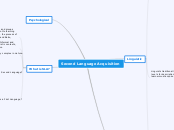a Braley Rosario 7 éve
919
Second Language Acquisition
Second Language Acquisition (SLA) involves learning a language after acquiring a first language, which can be referred to as a native or mother tongue. This complex process encompasses both individual and group learning experiences.









